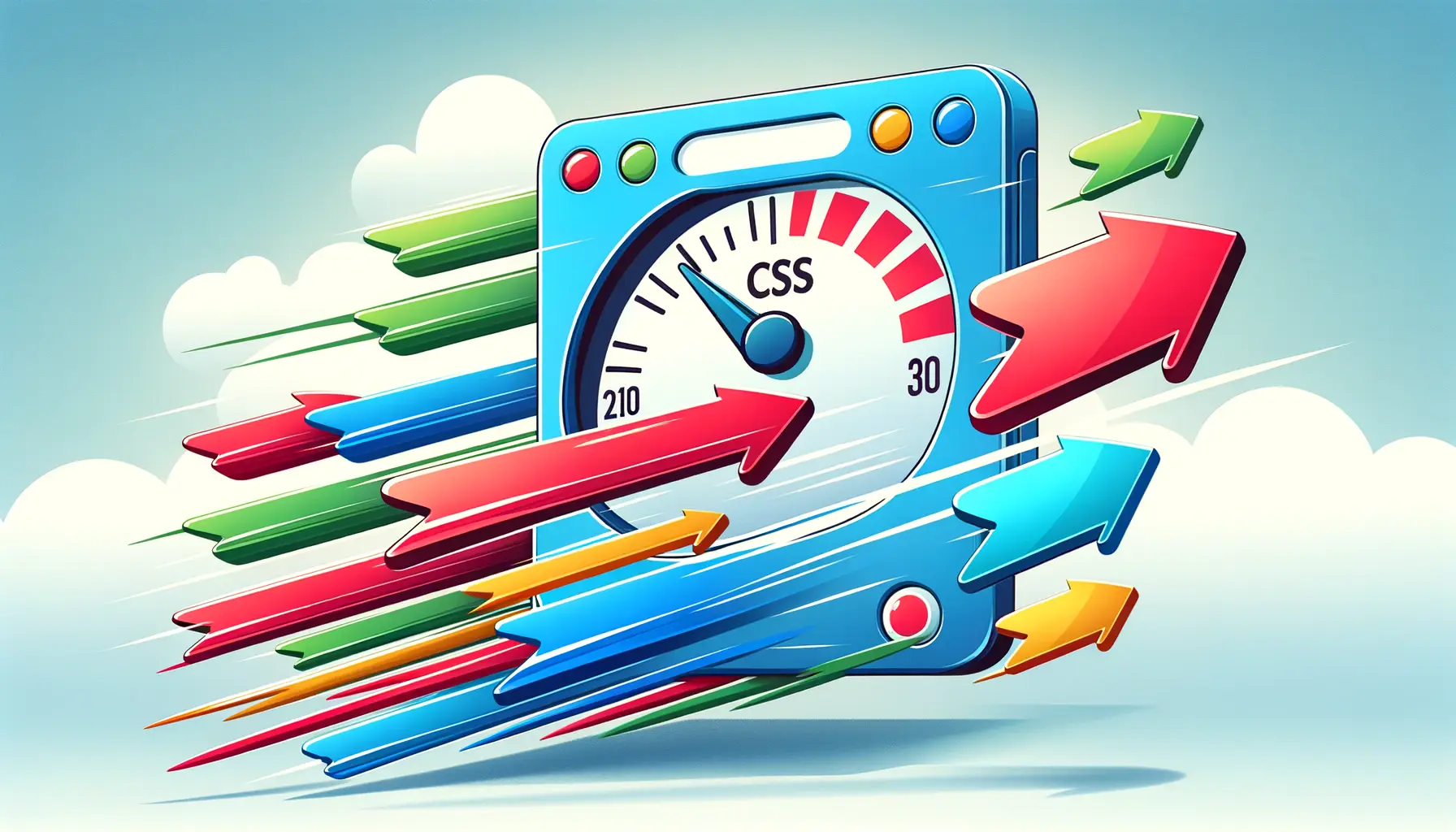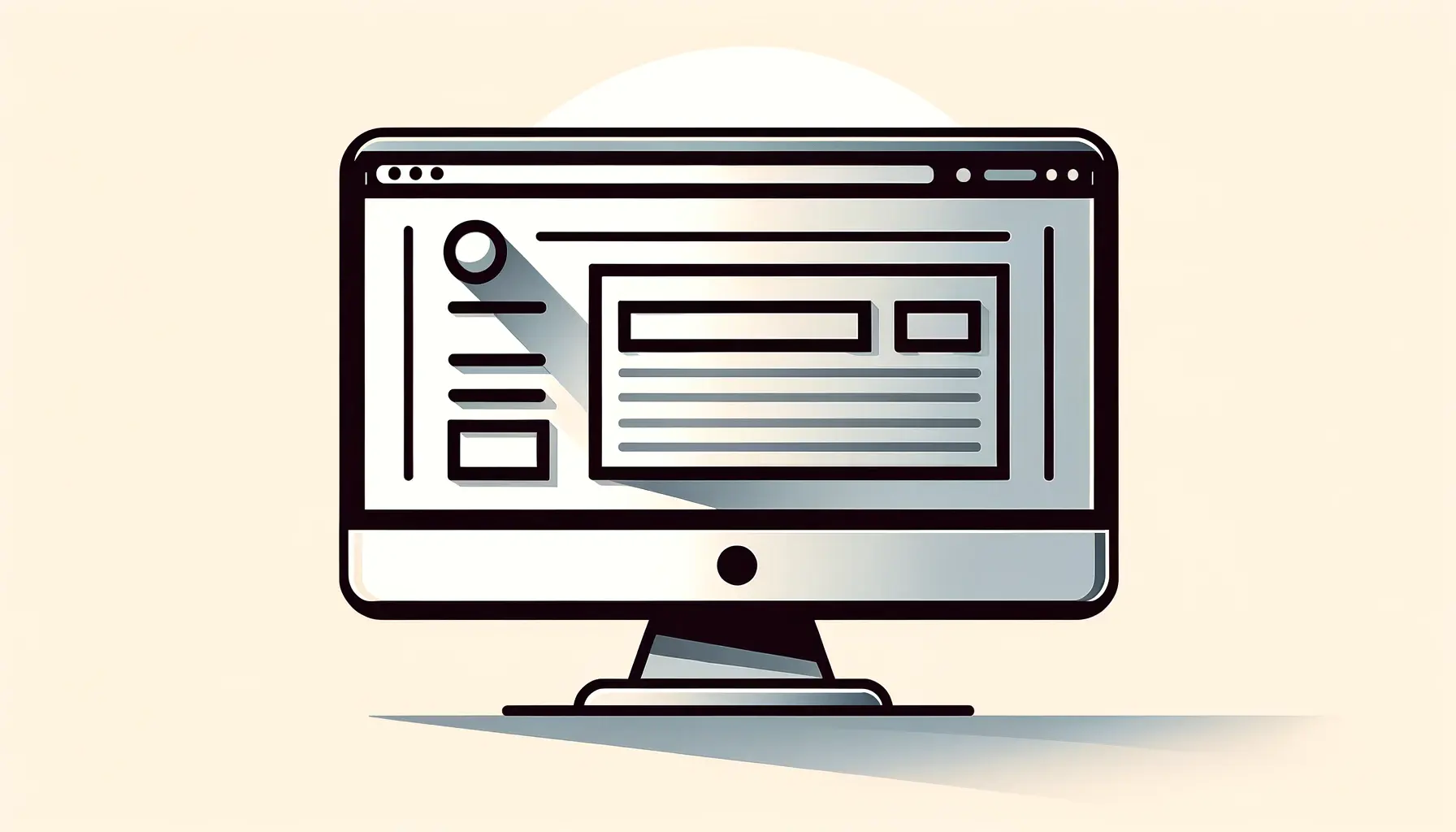Optimizing cache in CSS delivery is a critical aspect of web development that significantly impacts the performance and speed of a website.
In the digital age, where the speed of content delivery can make or break the user experience, understanding and implementing cache optimization strategies become paramount.
This article delves into the intricacies of cache optimization, focusing on its benefits for CSS delivery, a cornerstone for styling modern web pages.
By exploring this topic, we aim to shed light on how developers and website owners can leverage caching to enhance website performance, improve user satisfaction, and ultimately, drive success in the online realm.
Cache optimization refers to the process of efficiently storing web resources in a temporary storage location, known as a cache, to expedite their retrieval upon subsequent requests.
Specifically, for CSS files, which dictate the visual presentation of a website, effective cache management ensures that these files are readily available for quick loading, reducing the need for repetitive downloads from the server.
This not only speeds up the website’s load time but also conserves bandwidth and server resources, contributing to a more efficient and cost-effective web infrastructure.
- Understanding Cache and Its Importance in Web Performance
- Key Strategies for Cache Optimization in CSS Delivery
- Advanced Techniques for Cache Optimization
- Impact of Cache Optimization on SEO and User Experience
- Challenges in Cache Optimization
- Monitoring and Analyzing Cache Performance
- Best Practices for Cache Optimization
- Maximizing Web Performance through Cache Optimization
- FAQs on Cache Optimization in CSS Delivery
Understanding Cache and Its Importance in Web Performance
At its core, caching is a technology designed to store copies of files in a temporary storage space, allowing for faster access and retrieval.
This mechanism plays a crucial role in enhancing web performance by minimizing the load on servers and reducing the time it takes for a website to become visible and interactive for the user.
The importance of caching in web development cannot be overstated, as it directly influences the efficiency of content delivery and the overall user experience.
Cache optimization, particularly for CSS files, is essential in the web development process.
CSS files, which control the layout and appearance of web pages, can significantly affect the page load time if not properly managed.
By optimizing the cache settings for these files, developers can ensure that web pages render quickly and smoothly, providing a seamless experience for the end-user.
This optimization involves setting appropriate cache headers and expiry times, which instruct browsers on how long to store the cached files before requesting new ones from the server.
Benefits of Effective Cache Management
Effective cache management offers numerous benefits, including improved page load speed, reduced server load, and lower bandwidth consumption.
By storing frequently accessed files like CSS in the cache, websites can load these files from the local storage of a user’s device rather than fetching them from the server on each visit.
This not only accelerates the loading process but also decreases the strain on server resources, allowing for a more scalable and robust web infrastructure.
Moreover, optimizing cache for CSS delivery contributes to a better user experience.
Websites that load quickly and efficiently are more likely to retain visitors, reduce bounce rates, and encourage engagement.
In an era where user expectations for speed and responsiveness are higher than ever, leveraging cache optimization techniques becomes a critical strategy for maintaining a competitive edge in the online landscape.
Cache optimization is a key factor in enhancing web performance, particularly for CSS delivery, by ensuring faster page loads, reducing server load, and improving user experience.
Key Strategies for Cache Optimization in CSS Delivery
Implementing effective cache optimization strategies for CSS delivery is crucial for enhancing website performance.
These strategies are designed to ensure that CSS files are stored and retrieved from the cache as efficiently as possible, reducing load times and improving the overall user experience.
Below, we explore several key strategies that can be employed to optimize cache for CSS delivery.
Setting Appropriate Cache Headers
Cache headers play a vital role in controlling how CSS files are cached by the browser.
By setting appropriate cache headers, developers can dictate the caching behavior, specifying how long the files should be stored in the cache before they need to be revalidated or fetched anew from the server.
The most commonly used cache headers for optimizing CSS delivery include:
- Cache-Control: This header specifies the caching policy for a resource. For CSS files, setting a long max-age can help keep the files in the cache for extended periods, reducing the need for frequent downloads.
- Expires: This header provides a specific date/time after which the cached resource is considered stale. It’s useful for setting an absolute expiry time for CSS files.
- ETag: The ETag header helps with revalidation by providing a unique identifier for the version of the CSS file. It allows browsers to check if the cached version matches the server’s version.
Leveraging Browser Caching
Browser caching is a mechanism that stores copies of files downloaded by the browser to speed up subsequent page loads.
To optimize CSS delivery, developers can leverage browser caching by:
- Configuring the server to send the correct cache headers for CSS files.
- Ensuring that CSS files are versioned, so changes trigger a new download, while unchanged files remain served from the cache.
Utilizing Content Delivery Networks (CDNs)
CDNs can significantly improve the caching of CSS files by distributing the content across multiple geographically dispersed servers.
This not only brings the content closer to the user but also enhances cache hit rates for CSS files.
Key benefits of using CDNs for CSS delivery include:
- Improved global availability and speed by serving CSS files from the nearest server to the user.
- Reduced server load and bandwidth usage on the origin server, as CDNs handle the distribution and caching of files.
Incorporating these cache optimization strategies for CSS delivery can lead to substantial improvements in website performance, enhancing both speed and user satisfaction.
Advanced Techniques for Cache Optimization
Beyond the basic strategies, there are advanced techniques in cache optimization that can further enhance CSS delivery and web performance.
These techniques involve more sophisticated approaches to managing cache behavior and ensuring that users receive the most up-to-date content without compromising on load times.
Versioning and Fingerprinting
Versioning and fingerprinting are techniques used to force browsers to load the latest version of CSS files after updates, while still benefiting from caching for unchanged files.
This is achieved by appending a version number or a unique fingerprint to the file names or query strings of CSS resources.
When the CSS file is updated, the version number or fingerprint changes, prompting the browser to download the updated file instead of using the cached version.
This approach ensures that users always receive the most current styles without unnecessary cache misses.
Cache Busting
Cache busting is a technique to invalidate cached resources that have been updated on the server.
It involves changing the URLs of CSS files in a way that the browser perceives them as entirely new resources, thereby bypassing the cache for these files.
This can be implemented through:
- Automated build tools that rename CSS files with a hash of their contents.
- Server-side scripts that append a timestamp or unique identifier to CSS URLs.
Utilizing Service Workers for Caching
Service workers are scripts that run in the background, separate from the web page, and provide features that don’t need a web page or user interaction.
They can be used to intercept network requests, cache or retrieve resources from the cache, and deliver them to the browser.
By using service workers, developers can implement sophisticated caching strategies for CSS files, such as:
- Caching CSS files on the first visit and serving them from the cache on subsequent visits.
- Updating cached CSS files in the background, ensuring users always have access to the latest versions without affecting load times.
While these advanced techniques require more setup and maintenance, they offer greater control over caching behavior and can significantly improve the efficiency of CSS delivery.
Impact of Cache Optimization on SEO and User Experience
Cache optimization not only enhances website performance but also has a profound impact on search engine optimization (SEO) and user experience (UX).
The speed at which a website loads is a critical factor that search engines consider when ranking websites.
Moreover, user experience is directly influenced by how quickly and smoothly a website operates.
Let’s delve into how cache optimization, particularly for CSS delivery, plays a pivotal role in improving both SEO and UX.
Improving Page Load Speed
Cache optimization significantly reduces the time it takes for a website to load by ensuring that CSS files are readily available in the user’s browser cache.
This reduction in load time is beneficial for SEO, as search engines favor websites that provide a quick and responsive experience to users.
Faster page load speeds lead to better rankings in search engine results pages (SERPs), making cache optimization a crucial aspect of SEO strategy.
Enhancing User Experience
The immediate impact of cache optimization on user experience cannot be overstated.
Websites that load quickly and display content without delays are more likely to retain visitors and encourage engagement.
Users are less likely to bounce from a site that offers a seamless experience, which in turn, positively affects the website’s SEO performance.
By optimizing cache for CSS delivery, developers can ensure that the visual elements of a website are loaded efficiently, contributing to a smoother and more enjoyable user experience.
Reducing Server Load and Bandwidth Usage
Cache optimization also contributes to a more efficient use of server resources and bandwidth.
By serving CSS files from the cache, the number of requests made to the server is significantly reduced, lowering server load and conserving bandwidth.
This not only improves the website’s performance but also reduces hosting costs.
Additionally, a lower server load means that the website can handle more concurrent users, enhancing the site’s scalability and reliability.
Effective cache optimization for CSS delivery is essential for achieving faster page load times, improving SEO rankings, and providing a superior user experience.
Challenges in Cache Optimization
While cache optimization offers numerous benefits for CSS delivery and web performance, it also presents several challenges that developers must navigate.
These challenges can impact the effectiveness of caching strategies and require careful consideration and planning to overcome.
Understanding these obstacles is crucial for implementing a successful cache optimization strategy.
Cache Invalidation
One of the primary challenges in cache optimization is cache invalidation—determining when and how cached data should be updated or removed.
Ineffective cache invalidation strategies can lead to users receiving outdated content, which can be particularly problematic for dynamic websites where content changes frequently.
Key considerations for effective cache invalidation include:
- Determining the optimal lifespan for cached CSS files to balance between performance benefits and content freshness.
- Implementing versioning or fingerprinting techniques to automatically invalidate cached files when updates are made.
Browser Compatibility
Different browsers may handle caching in slightly different ways, leading to inconsistencies in how CSS files are cached and retrieved.
This can affect the website’s appearance and functionality across different browsers, posing a challenge for developers aiming for a consistent user experience.
Strategies to address browser compatibility issues involve:
- Testing website performance across multiple browsers to identify and address caching discrepancies.
- Using standardized cache-control headers that are widely supported by modern browsers.
Complexity of Implementation
Implementing advanced cache optimization techniques, such as service workers or sophisticated cache invalidation mechanisms, can add complexity to the development process.
This complexity requires a deeper understanding of caching principles and may increase the time and resources needed for development and maintenance.
To manage this complexity, developers can:
- Leverage tools and frameworks that simplify the implementation of caching strategies.
- Focus on incremental improvements, starting with basic caching techniques and gradually adopting more advanced strategies as needed.
Ignoring the challenges of cache optimization can lead to suboptimal website performance and user experience issues. Addressing these challenges head-on is essential for maximizing the benefits of cache optimization.
Monitoring and Analyzing Cache Performance
To ensure that cache optimization efforts are effective, it’s crucial to monitor and analyze cache performance regularly.
This process involves tracking various metrics related to cache usage, hit rates, and the impact on website loading times.
By understanding these metrics, developers can make informed decisions to fine-tune their caching strategies for optimal performance.
Key Metrics for Cache Performance
Several key metrics are essential for evaluating the effectiveness of cache optimization strategies, including:
- Cache Hit Rate: The percentage of requests served from the cache compared to the total number of requests. A higher cache hit rate indicates effective cache usage.
- Load Time Reduction: The decrease in page load times as a result of caching. Monitoring load times before and after implementing cache optimization can highlight its impact on performance.
- Bandwidth Savings: The amount of bandwidth saved by serving files from the cache instead of fetching them from the server. This metric can help quantify the cost savings associated with cache optimization.
Tools for Monitoring Cache Performance
Various tools are available to help developers monitor and analyze cache performance, including:
- Web Developer Tools: Built-in browser tools, such as Chrome DevTools, offer insights into cache behavior and performance metrics directly in the browser.
- Web Performance Testing Services: Services like GTmetrix and WebPageTest provide comprehensive performance analysis, including cache efficiency and recommendations for improvement.
- Server-Side Analytics: Server logs and analytics tools can track cache hit rates and the effectiveness of server-side caching strategies.
Regular monitoring and analysis enable developers to identify areas for improvement and adjust their cache optimization strategies accordingly.
This proactive approach ensures that websites remain fast and efficient, providing a superior user experience.
Continuous monitoring and analysis of cache performance are critical for maintaining and enhancing website speed and efficiency through effective cache optimization.
Best Practices for Cache Optimization
To maximize the benefits of cache optimization for CSS delivery and overall web performance, adhering to established best practices is essential.
These guidelines help ensure that caching strategies are effectively implemented, providing a fast and seamless user experience while minimizing potential issues.
Implement Consistent Cache Policies
Consistency in cache policies across all web assets ensures that caching behavior is predictable and efficient.
Best practices include:
- Using uniform cache-control headers for similar types of content to standardize caching durations and validation methods.
- Applying consistent versioning or fingerprinting strategies to facilitate effective cache invalidation when updates are made.
Optimize Cache Storage and Management
Efficient cache storage and management are crucial for maintaining high performance and avoiding cache bloat.
Recommendations include:
- Regularly reviewing and purging outdated or unused cache entries to free up storage space and reduce overhead.
- Segmenting cache storage based on content type or user segments to improve cache hit rates and reduce unnecessary cache misses.
Leverage Advanced Caching Techniques
Advanced caching techniques, such as edge caching and service workers, can provide additional performance improvements.
Key considerations involve:
- Utilizing edge caching through CDNs to serve content from locations closer to the user, reducing latency and improving load times.
- Implementing service workers for fine-grained control over caching behavior, including offline access and background updates.
Focus on User-Centric Performance Metrics
Ultimately, the goal of cache optimization is to enhance the user experience.
Focusing on user-centric performance metrics ensures that optimization efforts are aligned with this goal.
Important metrics to monitor include:
- First Contentful Paint (FCP) and Largest Contentful Paint (LCP), which measure the loading performance of content that is meaningful to the user.
- Time to Interactive (TTI), which assesses how quickly a page becomes fully interactive.
By following these best practices, developers can create a robust cache optimization strategy that significantly improves website performance, SEO, and user satisfaction.
The key is to maintain a balance between maximizing cache benefits and ensuring content freshness and relevance.
Adopting best practices for cache optimization is a continuous process that requires regular evaluation and adjustments based on performance metrics and user feedback.
Maximizing Web Performance through Cache Optimization
In the realm of web development, the significance of cache optimization, especially in CSS delivery, cannot be overstated.
This article has traversed the landscape of cache optimization, uncovering its pivotal role in enhancing website performance, SEO rankings, and user experience.
As we’ve explored, the strategic implementation of cache optimization techniques not only propels websites to perform at their peak but also ensures a seamless and engaging experience for users across the globe.
The Cornerstone of Web Efficiency
Cache optimization serves as the cornerstone of web efficiency, enabling faster content delivery and reducing server load.
By leveraging strategies such as setting appropriate cache headers, utilizing CDNs, and employing advanced techniques like versioning and service workers, developers can significantly improve the speed and responsiveness of their websites.
These efforts culminate in a robust web presence that stands out in the competitive digital landscape.
Challenges and Best Practices
However, the journey to optimal cache implementation is not without its challenges.
Issues such as cache invalidation, browser compatibility, and the complexity of advanced caching mechanisms necessitate a thoughtful approach.
Adhering to best practices, including consistent cache policies, efficient cache storage management, and a focus on user-centric performance metrics, can guide developers through these challenges.
By doing so, they ensure that their cache optimization strategies yield the desired outcomes.
- Implementing consistent cache policies across all web assets to ensure predictable and efficient caching behavior.
- Optimizing cache storage and management to maintain high performance and avoid cache bloat.
- Leveraging advanced caching techniques, such as edge caching and service workers, for additional performance improvements.
- Focusing on user-centric performance metrics to align optimization efforts with enhancing the user experience.
In conclusion, cache optimization in CSS delivery is a critical component of modern web development that demands attention and expertise.
Through the strategic application of caching techniques and best practices, developers can unlock the full potential of their websites, delivering content at lightning speed while ensuring a delightful user experience.
As the digital landscape continues to evolve, the importance of cache optimization will only grow, making it an indispensable skill in the toolkit of every web developer.
Quality web design is key for a great website! Check out our service page to partner with an expert web design agency.
FAQs on Cache Optimization in CSS Delivery
Explore commonly asked questions about enhancing your website’s performance through effective cache optimization in CSS delivery.
Cache optimization in CSS delivery involves strategies to efficiently store CSS files in the browser cache, speeding up page load times and improving site performance.
It reduces server load, decreases page load times, and enhances user experience by ensuring CSS files are quickly accessible from the browser cache.
Use cache-control headers, leverage browser caching, and employ content delivery networks (CDNs) to distribute and cache CSS files efficiently.
Cache-control headers are HTTP headers used to specify caching policies, such as how long a file should be stored in the cache before it’s considered stale.
Yes, by improving page load speeds and site performance, cache optimization can positively impact SEO rankings and user engagement.
Challenges include managing cache invalidation, ensuring browser compatibility, and implementing advanced caching techniques without increasing complexity.
Regularly review and adjust your strategy based on performance metrics, website updates, and evolving best practices in web development.
Yes, tools like Chrome DevTools, GTmetrix, and server-side analytics can provide insights into cache hit rates and the effectiveness of your caching strategy.












